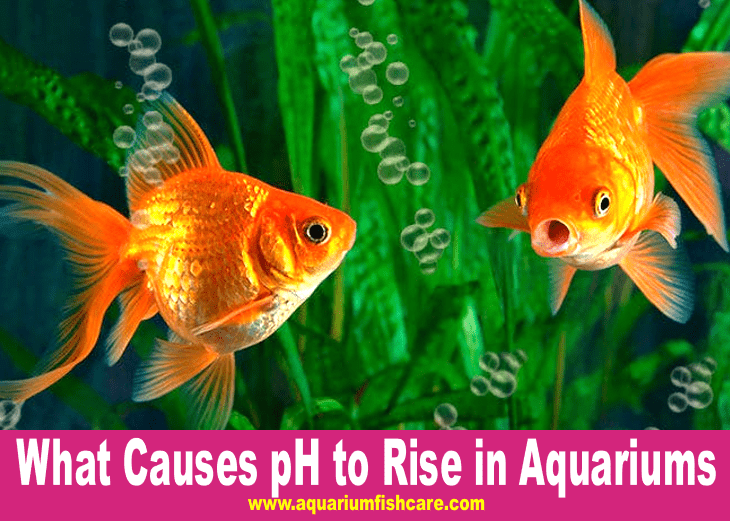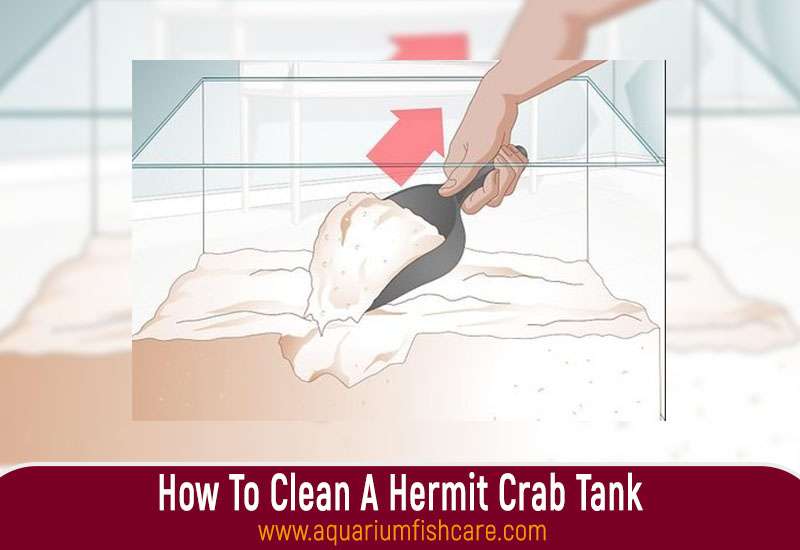What Causes pH to Rise in Aquariums? The rise in pH in an aquarium can be caused by the removal of carbon dioxide, an insufficient increase in carbonate alkalinity, and leeching cations from various substrates. Maintaining the ideal pH level in your aquarium is essential for the health and well-being of your aquatic life.
Keeping the pH levels stable is crucial for the overall water quality and the thriving of your fish and aquatic plants. However, if you notice a rise in pH, it could be due to several factors, such as carbon dioxide depletion, inadequate carbonate alkalinity, or the leeching of cations from substrates.
Understanding the causes of pH rise in your aquarium is vital for creating a suitable environment for your aquatic pets and ensuring their long-term health. We’ll explore the factors that can lead to increased aquarium pH and discuss effective strategies to address and regulate it.

Factors Affecting Ph
Various factors can influence aquarium pH levels. Understanding these factors is essential for maintaining a stable pH balance in your aquarium.
Carbon Dioxide Levels
High levels of carbon dioxide in the aquarium can raise the pH. Removing excess carbon dioxide is crucial to prevent pH fluctuations.
Decomposition And Respiration
The decomposition of organic matter and fish respiration can release acids into the water, gradually increasing the pH.
Presence Of Tannins
Tannins from sources like driftwood or leaves can lower the pH in aquariums by releasing organic acids into the water.
It is important to monitor these factors regularly and take appropriate actions to maintain the optimal pH levels for the health of your aquatic ecosystem.
Natural Elements
Several natural elements can raise the pH level in your aquarium. Understanding these elements can help you create a balanced environment for your aquatic pets. Let’s explore three common natural factors affecting aquariums’ pH level: aquarium driftwood, almond leaves, and peat moss.
Aquarium Driftwood
Aquarium driftwood is a natural element that can raise the pH level in your aquarium. The wood releases tannins into the water, which have acidic properties that lower the pH. However, as the tannins are gradually depleted, the pH level may rise over time due to the decomposition of the wood and the release of organic acids. Monitoring the pH level regularly when using driftwood in your aquarium is important.
Almond Leaves
Almond leaves are another natural element that can raise pH. Similar to driftwood, they contain tannins, which can lower the pH. However, as the leaves break down, the tannins are released into the water, gradually depleting over time. Almond leaves also have antibacterial properties, making them beneficial for the overall health of your aquarium inhabitants.
Peat Moss
Peat moss is a popular natural material in aquariums to lower pH levels. However, it’s important to note that the use of peat moss can also cause pH to rise if not used correctly. Peat moss contains humic acids, which are acidic. When added to the aquarium, these acids can reduce the pH. However, if too much peat moss is used or if the water parameters are not properly monitored, the acids can be depleted, leading to a rise in pH levels.
It’s essential to carefully monitor the pH levels in your aquarium when using these natural elements. Regular testing and adjustments will help maintain a stable pH and create a suitable environment for your aquatic pets.
Artificial Interventions
Artificial interventions can raise the pH of an aquarium. Factors such as the lack of carbon dioxide, the leeching of cations from substrates, and the use of certain materials like calcium carbonate rock can contribute to a higher pH level in the tank.
Aquarium owners must be aware of these potential causes and take appropriate measures to maintain a stable pH for the well-being of the fish.
Water Changes
Regular water changes are one of the easiest and most effective ways to address a high pH level in your aquarium. By replacing a portion of the water in your tank with fresh water, you can dilute any build-up of alkaline substances and help restore a more balanced pH level. It’s recommended to perform water changes on a weekly basis, typically replacing about 10-15% of the total volume.
Using Chemical Solutions
In some cases, water changes alone may not be sufficient to lower the pH in your aquarium. This is where chemical solutions come into play. pH-lowering agents, such as aquarium-safe acids or pH reducers, can be added to the water to help lower the pH level to a more desirable range. It’s important to carefully follow the instructions provided by the manufacturer and test the water regularly to avoid drastic pH fluctuations.
Conclusion:
Overall, artificial interventions such as water changes and the use of chemical solutions can effectively address a high pH level in an aquarium. Implementing these methods can help create a suitable environment for your aquatic organisms and maintain their health and well-being. Regular monitoring and adjustment of pH levels are essential for the long-term success of your aquarium.
Maintaining Ph Stability
Proper maintenance of pH levels in an aquarium is essential for the health and well-being of your aquatic ecosystem. Let’s delve into the importance of maintaining a stable pH and methods to lower the pH effectively.
Importance Of Stable Ph
Maintaining a stable pH in your aquarium is crucial as fluctuations can stress fish and other aquatic organisms. A consistent pH level promotes optimal biological processes and balances the ecosystem.
Lowering Ph In Aquarium
- Water changes: Regular water changes help in gradually lowering the pH levels.
- Peat moss: Adding peat moss to the aquarium is a natural and safe solution for pH adjustment.
- Driftwood: Certain types of driftwood can naturally reduce the pH of water over time.
- Indian almond leaves: These leaves can aid in lowering pH levels and provide beneficial tannins.
- Reverse osmosis (RO): Using RO water can help lower the aquarium’s overall pH.
- Chemicals: Carefully chosen pH-lowering chemicals can be used as a last resort under expert guidance.
Effects Of High Ph
When your aquarium’s pH rises, it can be caused by removing carbon dioxide, leeching cations from various substrates, or insufficient carbonate alkalinity. You can use calcium carbonate-based rock and substrate to raise pH and buffering safely. Elevated pH levels can negatively affect fish, including increasing the risk of diseases like ich.
Impact On Fish Health
Your aquarium’s pH level plays a critical role in the health and well-being of your fish. A high pH level can harm your fish, potentially leading to various health issues.
Signs Of High Ph In Aquarium
- Fish Gasping at the Surface
- Erratic Swimming Patterns
- Inflamed or Damaged Gills
- Stress and Agitation
- Reduced Reproduction Rates
Preventive Measures
Various factors can cause the pH to rise in an aquarium, such as the decomposition of organic matter, the presence of certain substrates, and insufficient water changes. Preventive measures to control pH levels include using carbon-based substrates, adding peat moss, and conducting regular water changes to maintain a healthy environment for the fish.
Natural Remedies
Using natural remedies to prevent pH rise in the aquarium is an effective and eco-friendly approach. Natural materials like peat moss, driftwood, and Indian almond leaves can be introduced to the aquarium to help maintain a stable pH level. These materials release tannins and organic acids, which act as natural buffers, regulating the pH level and preventing it from rising excessively. Incorporating these natural remedies helps stabilize the pH and creates a more natural and stimulating environment for the aquatic life.
Artificial Solutions
For more immediate and controlled interventions, artificial solutions can also be employed to prevent pH elevation in the aquarium. Commercial pH stabilizers and specific chemical formulas designed to lower the alkalinity can effectively regulate and maintain the pH level within the desired range. However, it is essential to use these artificial solutions cautiously, following the instructions provided by the manufacturers, and regularly monitor the pH to avoid sudden fluctuations that may stress the aquatic inhabitants.
Frequently Asked Questions For What Causes pH to Rise in Aquariums
Why Does My Aquarium Ph Keep Rising?
The pH in your aquarium may rise due to removing carbon dioxide, inadequate carbonate alkalinity, or leeching cations from substrates. To lower the pH, consider adding calcium carbonate-based rock or substrate, conducting water changes, or using peat moss and driftwood.
Elevated pH levels can harm fish, causing diseases like ich.
What Raises The Ph In A Fish Tank?
Decomposition, respiration, and tannins can raise pH in a fish tank. Additionally, aquarium driftwood and almond leaves may also affect pH levels.
How Do I Fix High Ph In My Fish Tank?
To fix high pH in your fish tank, try the following methods:
1. Perform regular water changes.
2. Add peat moss to the aquarium.
3. Use driftwood or Indian almond leaves.
4. Consider using reverse osmosis (RO) water.
5. Use appropriate chemicals if necessary.
What Happens To Fish If Ph Is Too High?
If the pH is too high, fish can suffer from health issues such as ich, which results in white spots on their bodies. They may also become lethargic and exhibit scratching behavior. It’s important to maintain a stable pH level in the aquarium to ensure the well-being of the fish.
How Does Decomposing Matter Affect Aquarium Ph Levels?
Decomposing organic matter can release acids, causing pH to rise in aquariums over time.
Can High Water Temperature Lead To Ph Increase In Aquariums?
Yes, high temperatures accelerate chemical processes, potentially raising pH levels.
What Role Do Water Changes Play In Regulating Aquarium Ph?
Regular water changes dilute substances influencing pH, helping maintain stability.
Conclusion
Given the total plant life in your aquarium, pH can rise due to carbon dioxide removal. Some substrates may also release cations, raising the pH. Safely adjust pH using calcium carbonate-based materials. Maintaining appropriate pH levels is crucial for the well-being of your aquatic life.


